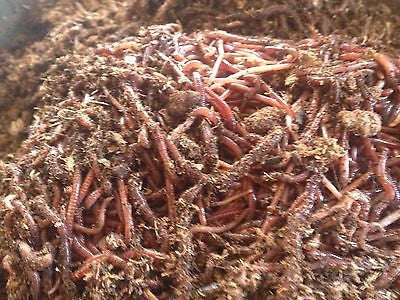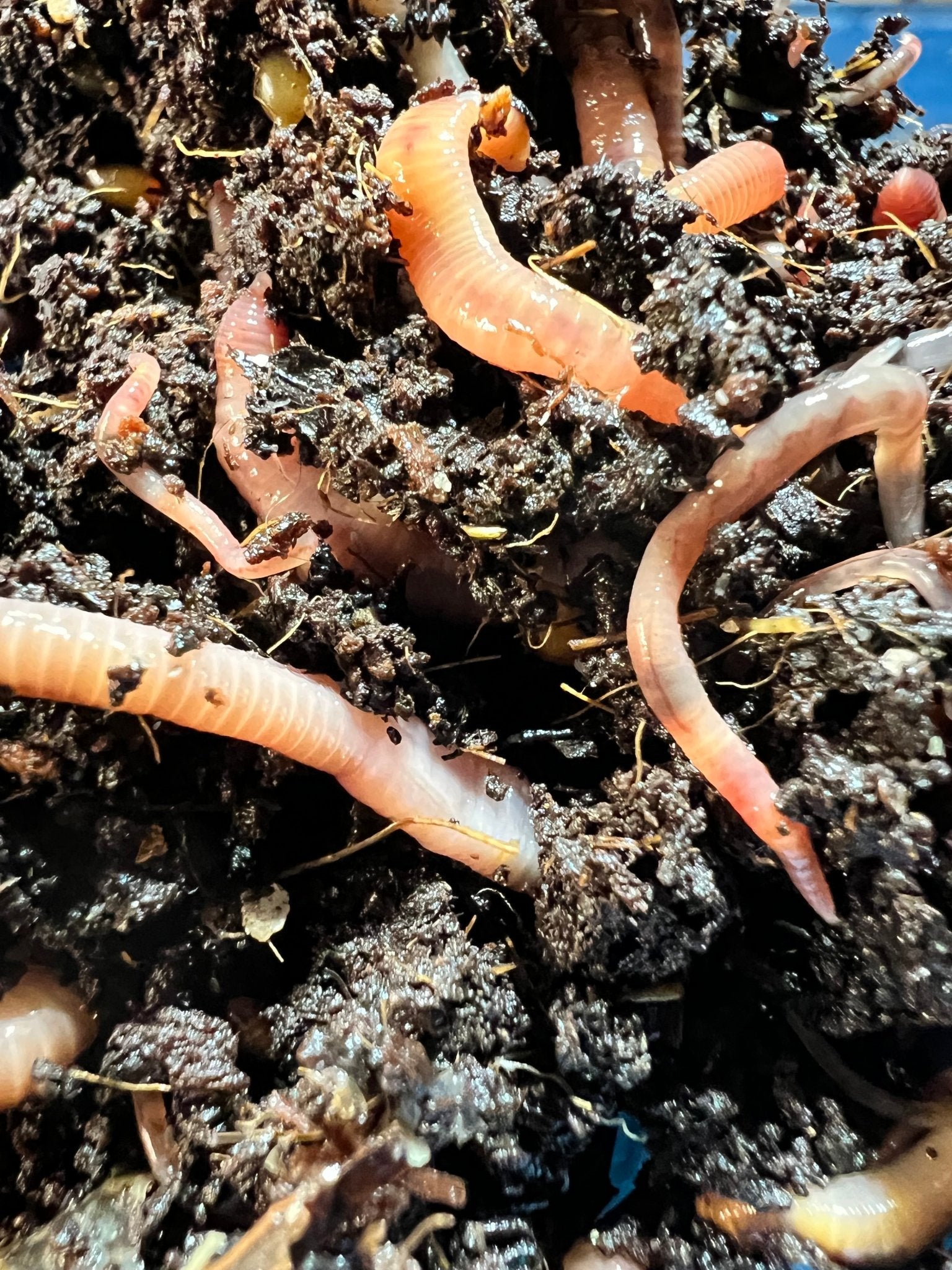Taking Full Advantage Of the Perks of Red Wiggler Worms: A Comprehensive Handbook for Home Gardeners and Urban Farmers
In the realm of sustainable horticulture methods, red wiggler worms stand as unhonored heroes, silently transforming natural waste right into nutrient-rich spreadings that can function wonders for soil health. By exploring the details of just how to efficiently care for and make the most of the advantages of red wiggler worms, individuals can unlock a wide range of possibilities for improving the sustainability and efficiency of their horticulture undertakings.
Understanding Red Wiggler Worms
Red Wiggler worms, renowned for their effective composting capabilities, are a varieties of earthworms widely used in vermiculture practices. These worms, clinically called Eisenia fetida, grow in decaying organic material, making them perfect candidates for composting (Red Wiggler Worms). Red Wigglers are voracious eaters, efficient in eating their very own weight in natural waste daily. Their digestive system procedure breaks down organic matter into nutrient-rich castings, which are an important resource for improving soil and promoting plant development.
One secret characteristic of Red Wiggler worms is their reproductive rate. These hermaphroditic animals possess both women and male reproductive body organs, allowing them to duplicate quickly under desirable conditions. A fully grown Red Wiggler can create numerous spawn in a short period, guaranteeing a steady populace within a composting system.

Establishing a Worm Container
When establishing a worm container for vermiculture objectives, appropriate preparation and focus to detail are essential for developing a favorable environment for Red Wiggler worms,. Begin by picking a suitable container for your worm bin. This can be a plastic or wooden container with a cover to maintain wetness levels and shield the worms from light. Make certain that the container has drain holes near the bottom to stop waterlogging.

Location the worm bin in an amazing, dark place away from straight sunlight and severe temperatures. On a regular basis keep an eye on the moisture degrees, including water if the bedding really feels dry or flaky. Feed the worms a balanced diet plan of vegetables and fruit scraps, avoiding citrus fruits, onions, and spicy foods. By following these actions, you can establish up a thriving worm bin that will successfully refine natural waste into nutrient-rich vermicompost for your yard.
Feeding and Preserving Worms
Making sure a nourishing and balanced diet plan is important for the health and performance of Red Wiggler worms in a vermiculture system. It is vital to prevent feeding them citrus fruits, onions, garlic, dairy items, meat, and oily foods as these can be dangerous to the worms or trigger unpleasant odors in the container.
Correct wetness levels are likewise vital for the wellness of Red Wiggler worms. The bed linen needs to feel like a moist sponge, offering sufficient dampness for the worms to breathe with their skin. Frequently inspect the wetness levels look at here now and adjust by adding water or completely dry bedding product as required. In addition, maintaining proper temperature conditions in between 55-77 ° F(13-25 ° C )will certainly guarantee ideal worm task and recreation. By vigilantly monitoring their diet, wetness, and ecological conditions, home gardeners and metropolitan farmers can sustain a healthy and balanced and effective Red Wiggler worm populace for composting objectives.
Harvesting Worm Castings
To successfully extract nutrient-rich worm spreadings from the vermicompost, an organized harvesting process is vital for taking full advantage of the composting benefits. Red Wiggler Worms. The initial step in collecting worm spreadings is to motivate the worms to move to one side of the bin. This can be achieved by putting fresh food scraps on one side and leaving the opposite side undisturbed for a couple of days. Once most of worms have actually moved to the side with fresh food, the castings can be accumulated from the contrary side.
After the spreadings have been harvested, it is essential to separate any type of continuing to be worms from the castings to prevent hurting them during storage or application. One effective method is to create cone-shaped piles of spreadings under intense light. Worms will intuitively move far from the light, permitting easy separation and elimination.
Finally, the harvested worm spreadings must be kept in a trendy, dark, and completely dry place to maintain their top quality and efficiency as a nutrient-rich dirt amendment. By adhering to these steps, home garden enthusiasts and urban farmers can maximize the advantages of red wiggler worms in their vermicomposting systems.
Utilizing Worm Castings in Gardening
The incorporation of nutrient-rich worm spreadings right into garden dirt can dramatically boost plant growth and total dirt health. Worm spreadings, also referred to as vermicast, are an all-natural plant food created by red wiggler worms as they damage down raw material. These spreadings are rich in important nutrients like nitrogen, phosphorus, potassium, and advantageous germs that promote plant growth and improve dirt framework.
When utilizing worm spreadings in horticulture, it is necessary to mix them completely into the dirt or use them as a top clothing around plants. The slow-release nature of worm spreadings makes sure a stable supply of nutrients to plants gradually, reducing the risk of nutrient leaching and advertising lasting dirt fertility. In addition, worm spreadings assist improve dirt aeration, water retention, and microbial task, creating a healthy and balanced environment for plant origins to thrive.

Conclusion
In final thought, the utilization of red wiggler worms in home gardening and city farming can significantly additional info profit soil health and wellness and plant growth. By understanding exactly how to set up and preserve a worm bin, feed the worms appropriately, and collect their nutrient-rich spreadings, gardeners can maximize the benefits of these earthworms.
In the world of sustainable horticulture practices, red wiggler worms stand as unsung heroes, quietly changing organic waste right into nutrient-rich castings that can work wonders for dirt health and wellness.When developing a worm bin for vermiculture functions, proper prep work and interest to detail are vital for developing a helpful atmosphere for Red Wiggler worms. The initial step in gathering worm castings is to click for more info motivate the worms to move to one side of the container. Worm spreadings, likewise known as vermicast, are an all-natural plant food created by red wiggler worms as they break down natural issue. By recognizing just how to establish up and keep a worm container, feed the worms effectively, and collect their nutrient-rich castings, gardeners can make the most of the advantages of these earthworms.